40 Portman Square, London, an office and residential scheme we manage on behalf of CBRE Investment Management, has been recognised with an Excellence Award for exceeding the Kingsley Index industry benchmark.
The award recognises that our team has provided:
…continued dedication and support on this flagship building, delivering overall occupier satisfaction, and going above and beyond to ensure that occupiers are satisfied with their experience.
KINGSLEY INDEX
The prestigious office and residential scheme has been under Workman management since 2019.
Our service at 40 Portman Square includes the management of offices for occupiers including global investment management organisations, property owners, and solicitors. The offices rise to six floors, with 20 flats taking up the seventh and eighth floors.
The scheme is managed by Workman’s specialist Welcome team, including onsite Building Manager Lauren Millard and Assistant Building Manager, Shannon Joyce, along with Sarah Masih, Associate, Property Manager.
The team’s service provision is centred around customer experience for the occupiers, in line with the business plan and future strategy for the property.
Commissioned by CBRE Investment Management, the Kingsley Index is an independent customer service survey, recognised as a highly comprehensive performance benchmarking database specific to the real estate industry.
Having been compiled following 35 years of analysing the performance of industry leaders, the index is one of the top industry standards for measuring employee, resident, and occupier satisfaction.
Find out more:
Operating at the intersection between high-quality customer experience and expert energy efficiency, the collaboration between our Welcome and IBOS teams has delivered cumulative savings of £3m for 10 properties.
Across space covering almost 1.5m sq. ft, the interface between the two teams has seen an average energy saving of 23% across the 10 properties managed by Welcome where IBOS is installed – this translates to 10,594,872 kWh saved, enough to power the equivalent of 1,060,000 UK households for one day.
Monika Newton, Partner and Head of Workman’s Welcome service, said:
IBOS has enabled us to enhance our service through technology. Increasingly, we are finding that occupiers are committed to improving the environmental performance of the buildings where their employees are based. For Gen Z employees especially, this is becoming a reason to come into the office, and even a reason to choose an employer.
James Hallworth, Partner and Head of Building Technology at Workman, said:
As the world moves towards more sustainable energy practices, understanding and optimising energy efficiency in buildings is predicted to play a vital role in achieving environmental goals. Owners within our Welcome-managed portfolio are at the vanguard of this shift, with a drive to offer the highest quality office experience to the most selective and forward-thinking occupiers.
See some of our standout achievements, where the power of IBOS has multiplied our Welcome service:
At Anchorage – a landmark waterside building situated in the heart of Salford’s international business quarter – our teams have achieved a 51% reduction in energy consumption, which translates to £293,073 in cost savings to date. The property has recently undergone refurbishment, including infrastructure upgrades with high-speed internet, modern VRF heating and cooling system, all integrated with IBOS technology.
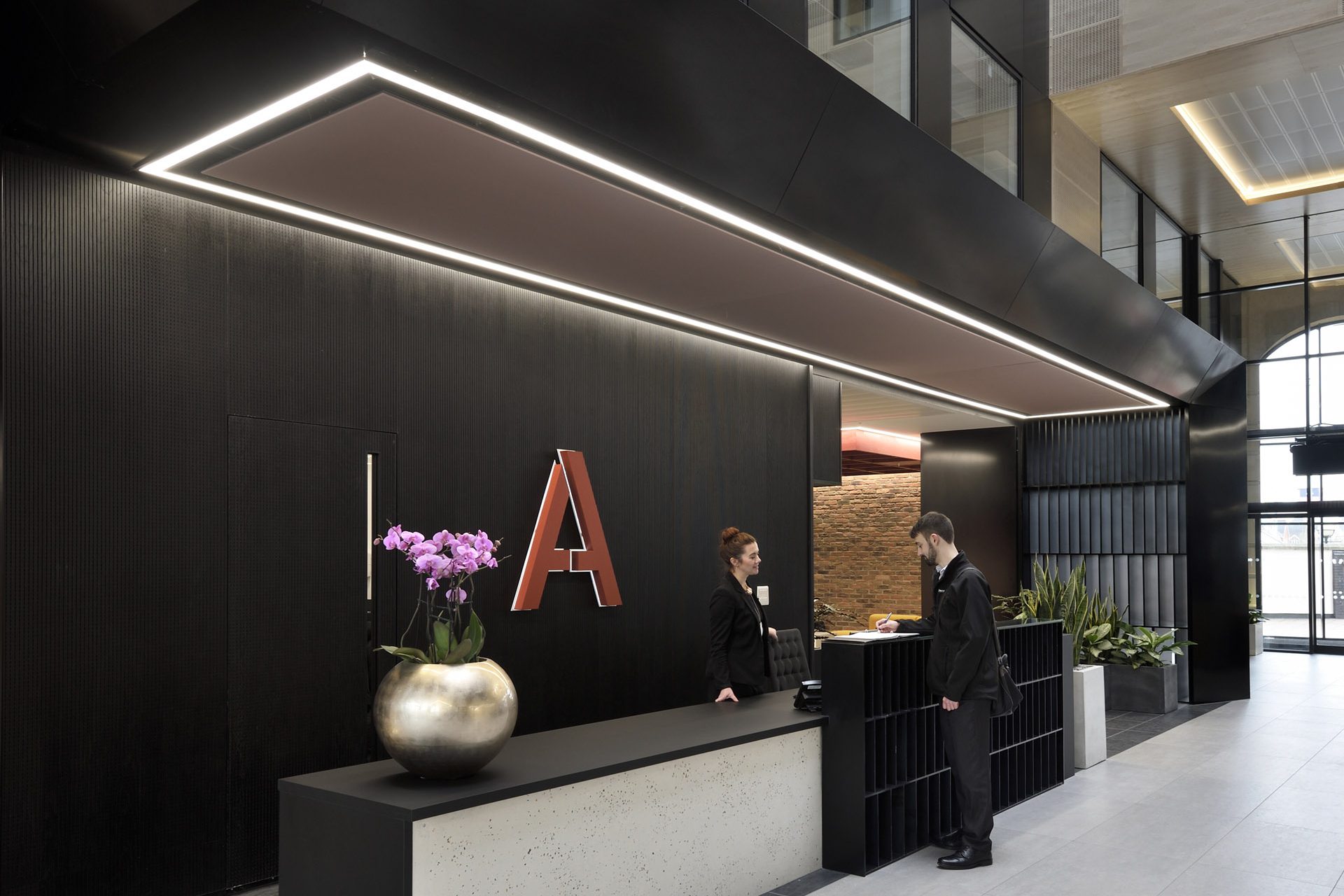
At 100 New Oxford Street – a mixed-use building in central London – we have delivered a 33% reduction in energy consumption, or £507,827 in cost savings to date. The team integrated IBOS into the whole building’s infrastructure, including the Building Management System (BMS), central plant, chillers, boilers, Air Handling Units (AHUs), Low-Temperature Hot Water (LTHW) systems, and extractor fans. A new metering network was installed, incorporating sub-meters connected to the IBOS platform designed for comprehensive energy data collection throughout the entire building. Meanwhile, IBOS wireless indoor air quality sensors were installed, enabling real-time air quality monitoring and immediate response capabilities.
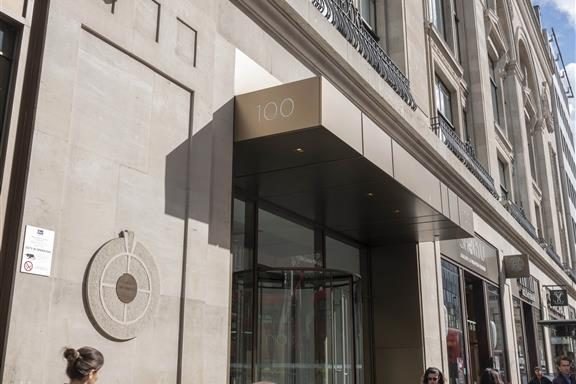
At Republic’s Import Building – office and mixed-use space in East London – our teams have realised a 22% reduction in annual energy consumption, which translates to cost savings of £780,242 to date. Building owner Trilogy said: “To achieve our EPC and Net Zero pathway goals, Trilogy recognises that significant opportunities lay in the optimisation of building controls to ensure equipment is operating efficiently, and at appropriate times. By implementing IBOS, Trilogy continues to maximise efficiencies, aligning to Net Zero interventions within our sustainability strategy.“
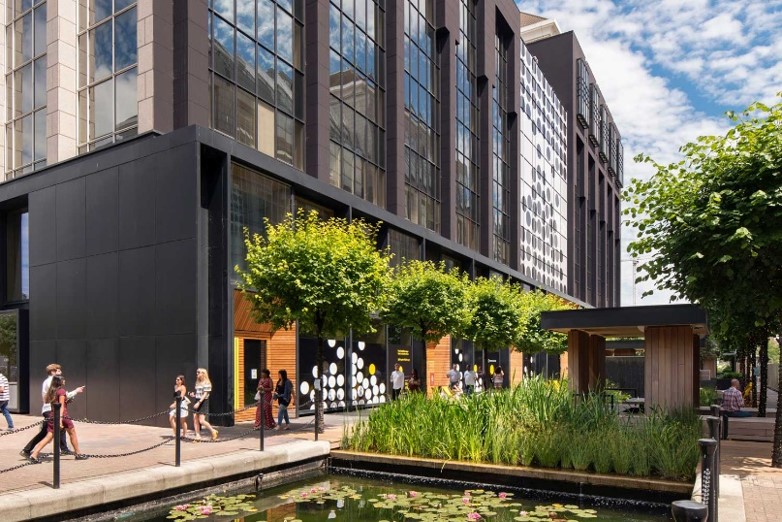
We know that today’s occupier is looking for a sense of place and community, so that the offices managed by our Welcome service become buildings that occupiers and their employees want to be in.
This means buildings that benefit from excellent customer service, as well as optimised energy efficiency, attract occupiers who are focused on the overall environment, while providing a richer experience for their employees.
Find out more:
Thanks to the talented team at Plant Designs London, our Welcome Offices portfolio has undergone a magical transformed into festive winter wonderlands. As soon as you step inside, you’re greeted by:
🎶 Christmas music
🌟 Seasonal scents
❄️ Stunning decorations
These festive touches create not just a beautiful space, but a memorable experience for everyone visiting our receptions this December.
The celebration doesn’t stop at decor. Throughout December, we’re hosting an array of festive activities and treats, including:
🎄 Decoration Workshops
🍷 Mulled Wine Carts
🥧 Mince Pies
🎁 Gift Stalls
❤️ Charity Drives
At Welcome, we’re passionate about crafting office environments that go beyond the functional. Our spaces are designed to be places where people can connect, celebrate, and enjoy every moment—especially during the holiday season.
The latest report from the British Council for Offices’ (BCO) Occupier Group, which tracks the evolution of customer experience best practice in the UK commercial office sector, has released its latest research, “Towards Experience Utopia: Customer experience best practice for the UK office sector,” which features contributions from our very own Monika Newton, Partner and Head of Welcome Offices at Workman.
From hotel management to “hotelification”
The British Council for Offices’ (BCO) mission is to research, develop and communicate best practice in all aspects of the office sector. It delivers this by providing a forum for the discussion and debate of relevant issues. Established in 1990, the BCO is Britain’s leading forum for the discussion and debate of issues affecting the office sector.
In her role as Head of Welcome Offices at Workman, where Monika leverages her background in hotel management to enhance service delivery in property management, Monika is bringing to life many of the recommendations of the BCO’s previous report: “Closing the Skills Gap”.

Monika advocates the importance of transferable skills, which she champions within her team.
We deliberately handpick our teams from all walks of life, knowing that their varied experience makes them competent and composed, regardless of the situation they are faced with.
She believes that a diverse team brings unique perspectives and skills that significantly improve occupier experiences. Monika highlights the journey of a team member who transitioned from hairdressing to a senior surveyor role, illustrating how skills such as multi‑tasking and customer service are invaluable in property management.
Building a rapport with people, multi-tasking, time-management, and health & safety … are all excellent transferrable skills for property management.
Understanding occupiers’ needs
Close collaboration and understanding occupiers’ needs is also an area of critical importance, as Monika describes:
For me, it’s the collaboration and almost ‘hotelification’ of offices, providing the occupiers with what they really need to attract their top talent, and for the occupiers and employees to actually thrive within the environment. It’s the close collaboration and building friendships which has a commercial end.
Monika also provides concrete examples of how collaboration leads to commercial success:
A recent example is one of our occupiers, Mott Macdonald, taking an additional floor following the landlord’s investment in upgrading the end-of-journey facilities [at 10 Fleet Place]. So, it really does work.
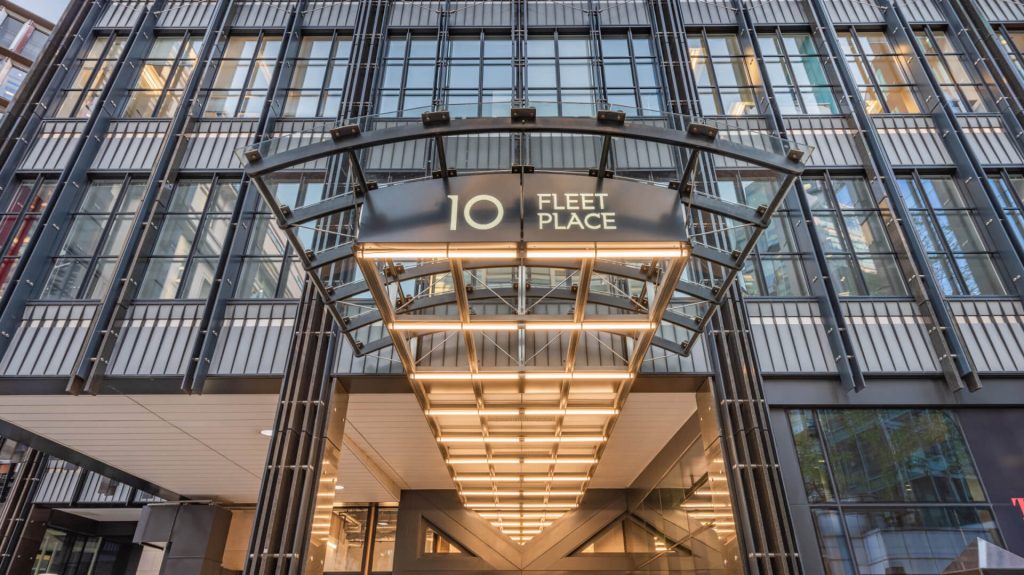
Finally, Monika stresses the importance of using technology to meet the expectations of younger generations:
We need to ensure we provide the technology that serves all generations, for example, making sure that Gen Z can get into the office using their phone instead of an access card.
For more, see: Welcome Offices
Eleanor Newton, Partner, recently presented on behalf of Workman’s Welcome team as part of a panel discussion for the University Design Forum’s event, held at Republic in conjunction with Trilogy Real Estate.
Developed by Trilogy Real Estate, and managed by Workman, Republic is the London home of a number of universities from across the UK, including York St John, Anglia Ruskin and University of the West of Scotland.

But Republic was originally aimed at a different market. The super-sized retrofit aimed at offices, in the image of developments in Shoreditch, but well-priced and located nearer to Canary Wharf.
The design was focused on placemaking, wellbeing and resource efficiency, an update on traditional office buildings for new and emerging businesses.
The office occupiers, however, did not arrive in their droves. However, interest came from universities seeking a base in London. The design approach of Republic, with a combination of a quality campus environment, location and pricing made this an attractive place for universities.
Eleanor’s key takeaways from the discussion:
The retrofit journey: By incorporating mass timber, water gardens, and bold design elements, an “accidental campus” has been created — even though universities weren’t the original target.
Overcoming physical challenges: Repurposing buildings not designed for student use requires presented obstacles, particularly in terms of access, fire safety, and communications to be overcome. Through innovative solutions, we’ve made these spaces fully functional for their new purpose.
Efficient space management: Universities operate on seasonal occupancy patterns, so implementing smart technologies like IBOS has been critical. This has led to a 25% reduction in energy consumption on campus.
The value of co-locating: Shared spaces, like the common room, have been introduced to minimise the need for multiple breakout areas on individual university floors. Additionally, the Welcome team is leading efforts to implement the campus’s Net Zero asset plan, which will directly benefit the universities involved.
Thank you to Dominic Morgan for chairing the panel, Robert Wolstenholme of Trilogy, alongside Dickon Hayward of Material Works (architects) with Milena Obradovic from Trilogy, who each outlined the challenges and opportunities of running a multi-university campus.
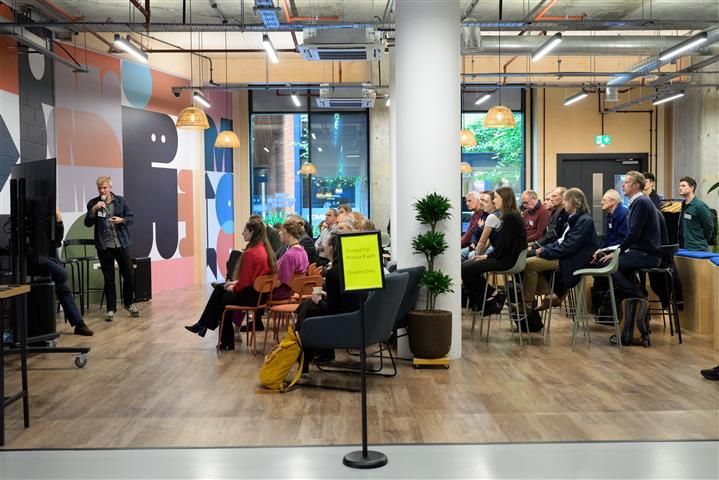
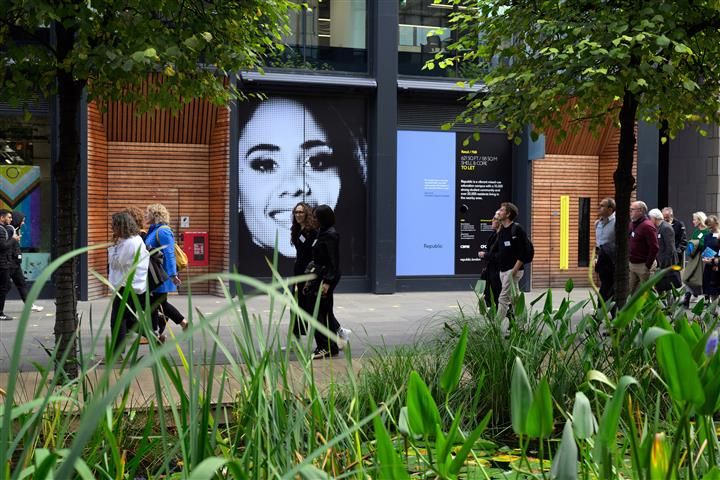
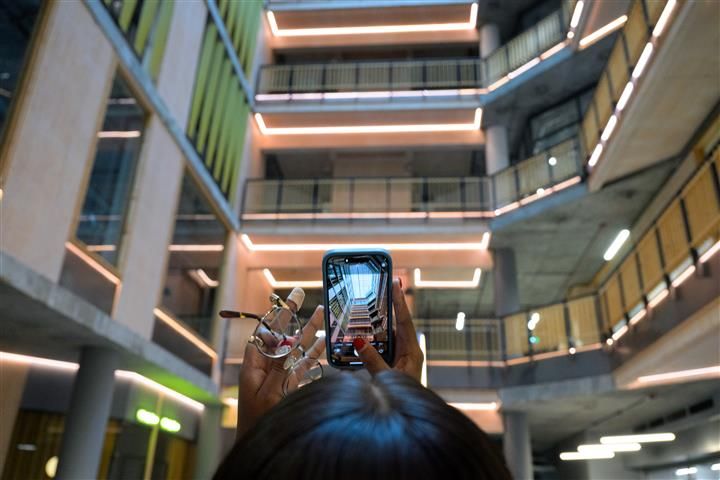
Find out more about Republic.
Mott MacDonald has signed up for an additional 20,000 sq. ft at its existing London headquarters, at Addington Capital’s Workman-managed 10 Fleet Place, as reported by React News.
The engineering giant has signed a lease for the fourth floor of the 186,000 sq. ft 10 Fleet Place. Overall, the global consultancy will have space totalling circa 60,000 sq. ft in the building, on leases running to 2040.
Occupying a popular mid-town / City location, 10 Fleet Place has been managed by Workman LLP under its Welcome Offices service since 2016. It is asset-managed by Addington Capital, which steers the property on behalf of Hong Kong-based Crosby Group, owner of the building since 2015.
Space availability at 10 Fleet Place during 2023 provided Mott MacDonald with the opportunity to fully refurbish the first and second floors without having to relocate staff. They adopted a phased approach, transferring employees into spaces once completely refurbished. Since signing their new lease, the engineering giant is currently working on refurbishing the fourth floor in keeping with its other spaces.
Monika Newton, Partner at Workman, and Head of the firm’s Welcome Offices team said: “This achievement is a true testament to the incredible collaboration between outstanding property management and asset management teams, along with the landlord’s investment in the building. Together we have delivered exceptional customer service, not only to attract new occupiers but also to retain our existing ones.”
Workman’s intelligent building optimisation system (IBOS) was installed in 2022 providing smart technology to optimise building plant and manage energy efficiency across all floors, which has delivered significant savings on electricity and gas. Indeed, IBOS has delivered a saving of 719,040 kwh, translating to £373,887 based on current contract rates.
Monika said: “We are working with Mott MacDonald and other occupiers to achieve their ESG aspirations, and know that tools such as IBOS have previously proven to help our clients achieve their corporate aspirations regarding delivery of carbon and cost savings.”
A substantial phased refurbishment programme has recently completed at the building, including new end of trip facilities, reception upgrade and new external signage (pictured). Occupiers at 10 Fleet Place benefit from top-of-the-range facilities, including 18 showers (fully refurbished in 2023), 191 bike racks, 24 folding racks and 168 lockers, secure underground parking facilities, six newly installed EV charging spaces and a Platinum WiredScore certification. The building also benefits from transport links including the Elizabeth Line at Farringdon.
Now 96% let, 10 Fleet Place is also home to occupiers including Interpath Advisory, CNBC and law firm Hogan Lovells.
Remaining office and retail space is all under offer.
Find out more about the Welcome service.
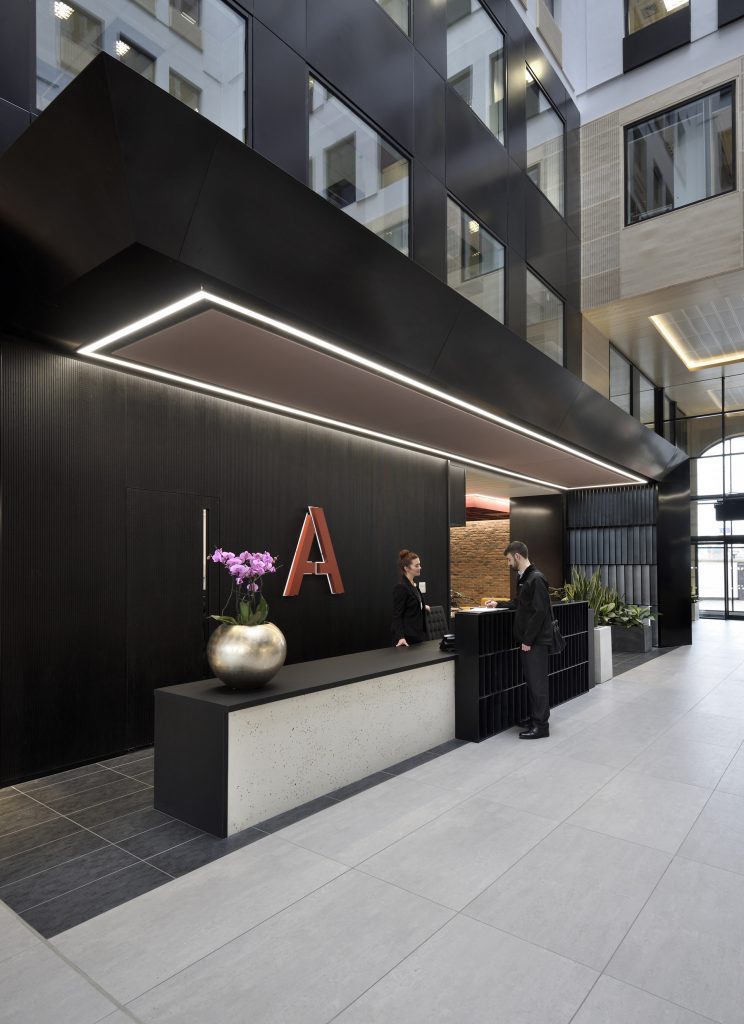
Diverse skillsets within onsite property management teams deliver meaningful service at Welcome Offices, explains Monika Newton, Partner.
From a former hairdresser to a reservist in the British Armed Forces, Welcome Offices’ onsite property management teams combine diverse skillsets.
Made up of individuals who are resourceful, imaginative, and highly capable, the teams provide an exemplary level of customer service and consistently exceed the expectations of occupiers.
“Our occupier service directly contributes to clients’ investment performance through improved occupier retention,” explains Monika Newton, Partner, who is based at Workman’s London 80 Cheapside office.
Teams are “deliberately handpicked from all walks of life”
As Head of the Welcome Offices team, Monika leads the service which was created to deliver an elevated standard of property management for the office sector, designed for the modern occupier at flagship assets.
“We deliberately handpick our teams from all walks of life, knowing that their varied experience makes them competent and composed, regardless of the situation they are faced with,” says Monika.
“Our people often start with us in facilities management roles, before getting hooked on a career in real estate.”

Monika, who began her own career in hotel management, is passionate about service delivery – and a champion of the transferrable-skills concept. One of Monika’s team members, Ripley Mercer, began her working life as a hairdresser, before becoming a receptionist at a Welcome-managed property. She then went on to become a Building Manager, before undergoing on-the-job-training that eventually saw her become a Senior Surveyor within the Welcome Offices team.
“Building a rapport with people, multitasking, time-management, and health & safety were all fundamental elements of Ripley’s role as a hairdresser,” explains Monika. “And of course, these are all excellent transferrable skills for property management, and people who’ve had a variety of experiences are always going to be intelligent additions to the team, with new perspectives to offer.”
Opportunities for on-the-job training
Aside from Ripley, there are a number of Welcome team members who have undergone degree programmes, along with Institution of Occupational Safety and Health (IOSH) training courses, and Institute of Workplace and Facilities Management (IWFM) training while working within their roles. These employees grow with the business and are promoted accordingly, allowing their careers to flourish, and making it more likely for Welcome to retain them.
Paul Howes, Senior Facilities Manager in the Welcome team, who was promoted from Estate Manager at Welcome-managed office campus Republic London, completed a degree in Real Estate Management while working for the firm.
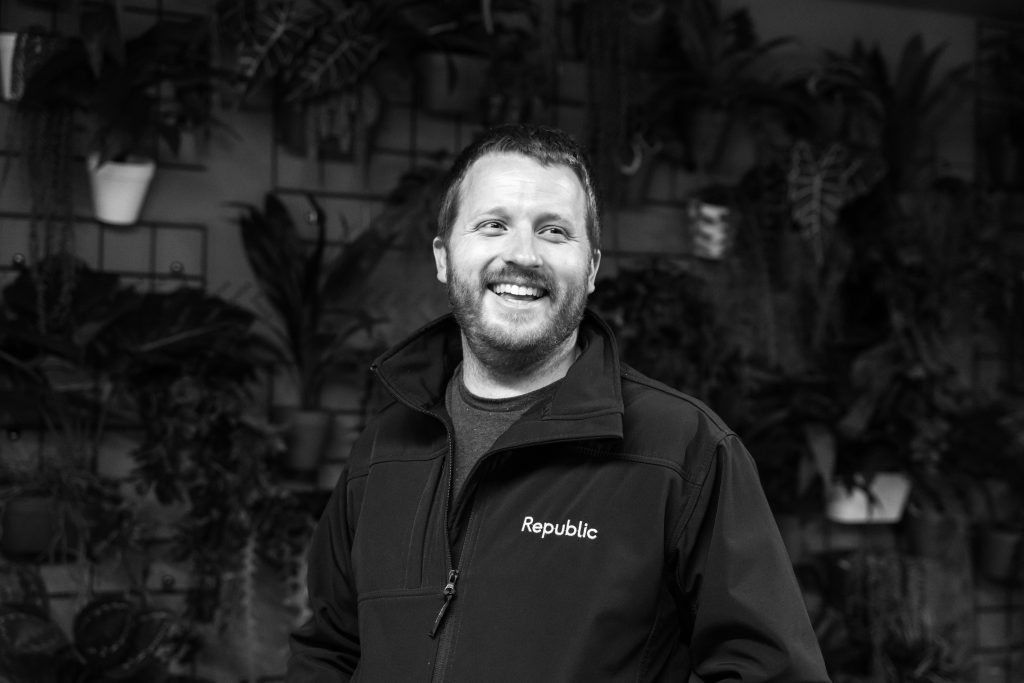
Paul says: “We know that people won’t stay in the same role unless they’ve got plenty of potential for opportunity and growth. We don’t expect people to sit still – we want to give them new areas of responsibility and the ambition to develop new occupier services.
“Of course, we want everyone to develop and succeed, and we are happy to guide them and give them the training opportunities and support to do that.”
A team of individuals
As Monika points out, the Welcome service is delivered by an onsite team of individuals who each have a unique voice and perspective, which proves invaluable to both occupiers and investor clients.
“The supportive and welcoming culture behind the service – and embedded within the team delivering it – is reflected in the service itself.”
Find out more about Welcome Offices here.
A 35-strong group of Partners, Property Managers, and Building Managers from Workman’s Welcome Offices team swapped business attire for wellies last week, when they took part in a charity day of volunteering at Hackney City Farm.
A small charity established in 1984 by enthusiastic members of the local community, Hackney City Farm offers children and grown-ups the opportunity to get up close to a range of farmyard animals. It provides a chance for inner-city dwellers to see, smell and plant vegetables, and to learn new skills in order to live a healthier, happier life with a lower environmental impact.
The charity day experience
The Welcome team was drafted in to help clean out the goats’ stables, moving a lot of muck from one heap to another. Over time, the muck decomposes, with the end product used in the fields and pig pens. The team was also enlisted with weeding crop beds and removing tree stumps, to create more space for animals to graze.
At the end of the day’s hard work, the team was invited to pet and play with the animals, which included the goats, lambs, sheep and pigs who live in this much-loved community resource in the heart of East London.
Farming in the heart of the city
For more than 35 years, Hackney City Farm has been giving the local community the opportunity to experience farming, right in the heart of the city.
As a city farm in London, it is dedicated to helping people learn about food, nature and the environment, providing a centre for environmental improvement, and a hub for projects for the improvement of the community and local environment.
Find out more about volunteering at Hackney City Farm
Find out more about Workman’s Building Community efforts
Last week, our Welcome team organised its own Activity Week, featuring activities and events across a range of Welcome properties to encourage occupiers to be more active, both at work and home.
The timetable of sessions, specifically curated for the Welcome properties and their occupiers, ran at Welcome-managed properties including Aldgate House, Queensbury House, Six Mitre Passage, 10 Fleet Place, 40 Portman Square, 80 Cheapside, 100 New Oxford Street, and 1 Dean Street, where employees were invited to embrace all that a healthy and active lifestyle has to offer.
When it comes to wellbeing, at Workman we believe that healthy habits underpin positivity and productivity in the workplace. As such, we are keen to share ways to help people embrace fit and healthy lifestyles within occupiers across our managed portfolio.
Welcome’s Activity Week gave teams and communities the chance to come together and take part in fun events – all focused on making active choices that deliver a healthy future. The week featured:
🎯🤸♂️💪Exercise workshops from Outrivals Gym, MYPT Studio, Nuffield, Gym Box, Revolution PT Studios, Third Space Personal Trainers and Fitness First,
🤸♂️🧘♀️💪Yoga classes from expert teacher Rossella Forastiero and the Lotus School of Yoga,
⚽🏀⛳Sports including putting golf, football and basketball shoot-outs,
💆♀️💆♂️👩💻Posture health-checks from Optimal Spine, chai massage,
🥝🍉🍒Nutrition pop-ups from Zooki, The Shoegaze Vegan, Mr Tinto and Juice Da Cruz.
🌼🌷🌳Mental health and wellbeing will also be addressed with breathing exercise sessions, and health checks from the Asian Resource Centre.
Want to know more?
Read about our Building Wellbeing services here > https://bit.ly/3leZ0c2
Read about our Building Communityservices here >https://bit.ly/3RL0jNV
When it comes to wellbeing, at Workman we believe that healthy habits underpin positivity and productivity in the workplace. As such, we are keen to share ways to help people embrace fit and healthy lifestyles within occupiers across our managed portfolio.
Next week, our Welcome team will run its own Activity Week, featuring activities and events for various properties – taking place both online and onsite – to offer tips and tools on how to be more active, both at work and at home.
The timetable of sessions, specifically curated for the Welcome properties and their occupiers, will give teams and communities the chance to come together and take part in fun events – all focused on making active choices that deliver a healthy future.

Welcome’s Activity Week will feature:
💥Exercise workshops from Outrivals Gym, MYPT Studio, Nuffield, Gym Box, Revolution PT Studios, Third Space Personal Trainers and Fitness First,
💥Yoga classes from expert teacher Rossella Forastiero and the Lotus School of Yoga,
💥Sports including putting golf, football and basketball shoot-outs,
💥Posture health-checks from Optimal Spine, chai massage,
💥Nutrition pop-ups from Zooki, The Shoegaze Vegan, Mr Tinto and Juice Da Cruz.
💥Mental health and wellbeing will also be addressed with breathing exercise sessions, and health checks from the Asian Resource Centre.
At Workman, we’re doing all we can to help our occupiers and their staff enjoy their workplace in healthy and active ways. Employees at Welcome-managed properties including Aldgate House, Queensbury House, Six Mitre Passage, 10 Fleet Place, 40 Portman Square, 80 Cheapside, 100 New Oxford Street, and 1 Dean Street are invited to attend next week’s events, and embrace all that a healthy and active lifestyle has to offer.
Presenting the programme, Monika Newton, Partner within the Welcome team, said:
“As occupiers and their employees make the office a regular part of their lives once again, we want to demonstrate how important health and wellbeing is and what a difference these activities can make to their enjoyment of their working environment. Our management and site teams have worked hard to create this exciting week, which showcases what’s available throughout the year. We hope all our occupiers take the opportunity to enjoy what’s on offer.”
Follow @welcomeoffices and Welcome – Workman Offices (@welcomeoffices) • Instagram photos and videos throughout the week to see what’s going on.
Want to know more?
Read about our Building Wellbeing services here > https://bit.ly/3leZ0c2
Read about our Building Community services here >https://bit.ly/3RL0jNV



































